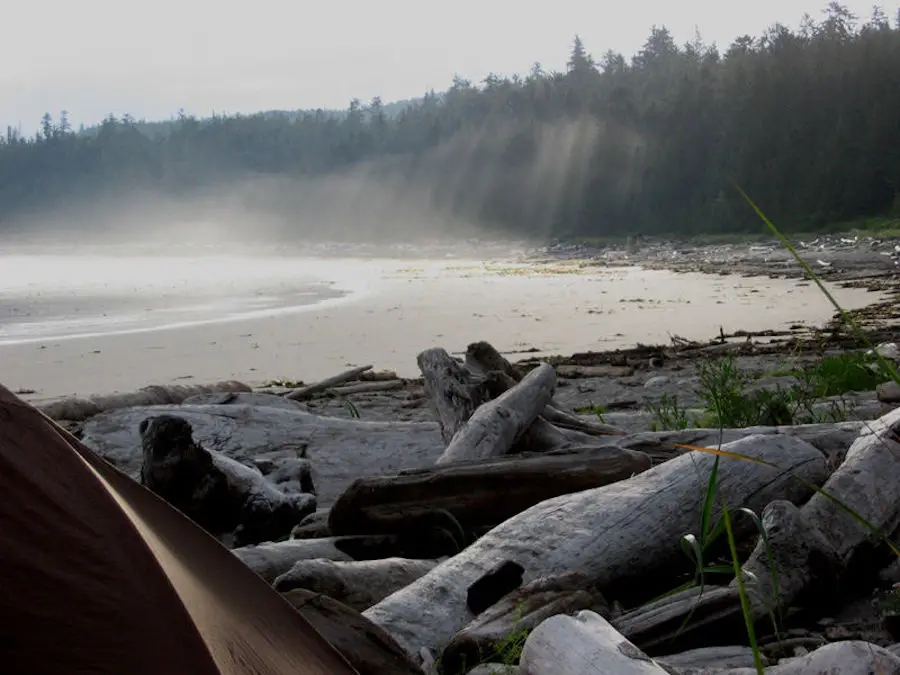Gulf Islands Marine Trail
- 25
- 5-100 NM
- ~Variable
- Class 2
- 25
- 5-100 NM
- ~Variable
- Class 2

As there are an abundance of launch and campsites in the Gulf Islands, your adventure can be of any length, with endless route options. To view three recommended legs, go to the BC Marine Trails Map, click on the Layers Icon and turn on the Marine Trail Layer.
Many of the campsites making up the Gulf Islands Marine Trail are in the Gulf Islands National Park Reserve, a BC Provincial Park or a Regional park. There are dozens of access points located on Vancouver Island and the Gulf Islands. Drive to a a number of city, town, or rural launch sites or walk on to a BC Ferry with your kayak and walk to a nearby launch site.
The Marine Trail encompasses most of the Gulf Islands from Saysutshun (Newcastle) Island to D’Arcy Island near Saanich. Some routes on the outside of Gabriola Island, Valdes and Galiano Islands have fewer sites and do not meet our Marine Trail Safety Mandate (i.e. campsites optimally 8NM apart to a maximum of 12NM apart).
While this area is more protected than some areas, wind and tides from the Salish Sea and Juan de Fuca strait can make for strong currents and rip tides. See the hazards and risks tab for more information.
This trail officially opened in 2011 — we continue to work on First Nations engagement, stewardship, and safety within the region.
Arriving by Car
The Gulf Islands Marine Trail has several entry points including Nanaimo, Ladysmith, Chemainus, Maple Bay, Mill Bay, Sidney and Saanich or you can travel to one of the main Gulf Islands.
Horseshoe Bay to Nanaimo: This BC ferry route takes ~1.5 hours. Consider launching into the north end of the Gulf Islands Marine Trail from Brechin boat ramp or nearby launches.
Tsawwassen to Swartz Bay: This BC ferry route takes ~1.5 hours. Consider walking on and launching at the nearby Government Dock or drive to various launches.
Tsawwassen to Duke Point: This BC ferry route takes ~2 hours. Access Nanaimo or Ladysmith launches within a half hour of traveling.
Tsawwassen or Crofton to Salt Spring Island: You can reach Salt Spring Island by ferry both from Tsawwassen and Crofton on Vancouver Island. Salt Spring Island has several launches into the Gulf Islands.
Walking on BC Ferries
As part of the Salish Sea Marine Trail project, the BC Marine Trails Network worked with BC Ferries to identify and set protocols for paddlers to walk or wheel their craft onto BC Ferries on select routes, then walk off to launch at a strategic nearby beach. Learn more.
Launching
There are an abundance of launch sites within the Gulf Islands — far too many to list — refer to the BC Marine Trails map to select your ideal launch site. Most Gulf Islands offer launch sites, making the region accessible from a wide variety of start and end points.
Leg 1 (dark orange)of the Gulf Island Marine Trail joins Nanaimo and the Saanich Peninsula by following the east coast of Vancouver Island. This leg has fewer campsites, some of which have been closed per the request of the local First Nation. The remaining sites are more functional than beautiful. However, there are many launch locations and small towns to stop and stay along the way.
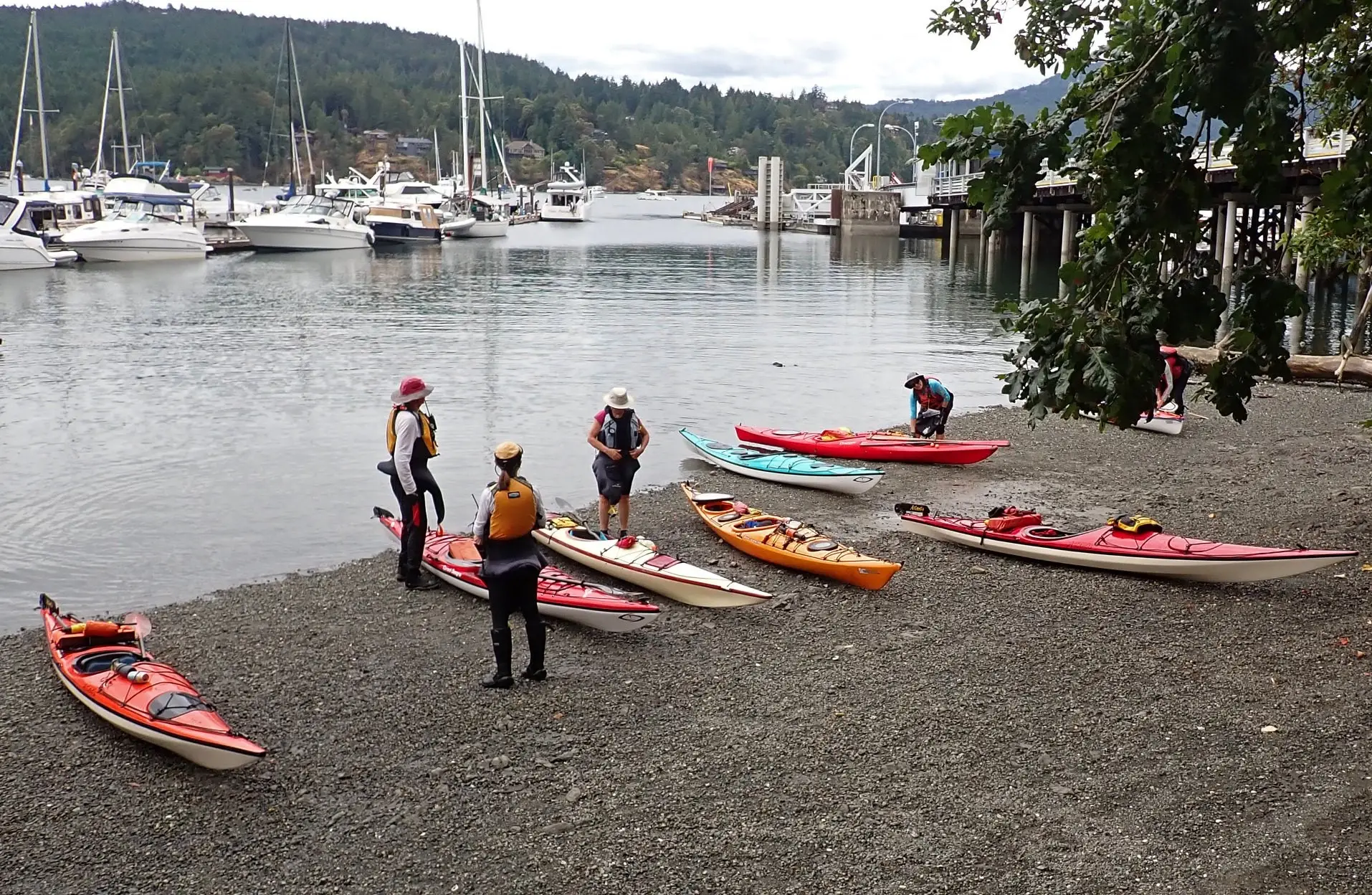
South End
Brentwood Bay is a popular starting point for Leg 1 on the east side of the Saanich Peninsula.. It’s a good idea to travel with the tide as it ebbs out of the Saanich inlet. Keep an eye out for the Mill Bay Ferry as it crosses.
Musgrave Landing is a good stopping point for the night. Sansum Narrows campsite is another option but it is not often used and sites may be hard to find.
Middle Section
The passage between Saltspring Island and Vancouver Island is Sansum Narrows. Watch out for rips and beware of funneling winds against currents. Mount Maxwell towers above and provides welcome shade on a hot summer day.
Stop for lunch at Vesuvius and consider a bed and breakfast for the night as nearby Tent Island is now closed for camping as per the request of the Penelakut Nation due to fire abuse. There is a pub between Penelakut and Thetis Islands, keep an eye on the very low tides or you will be walking your kayak.
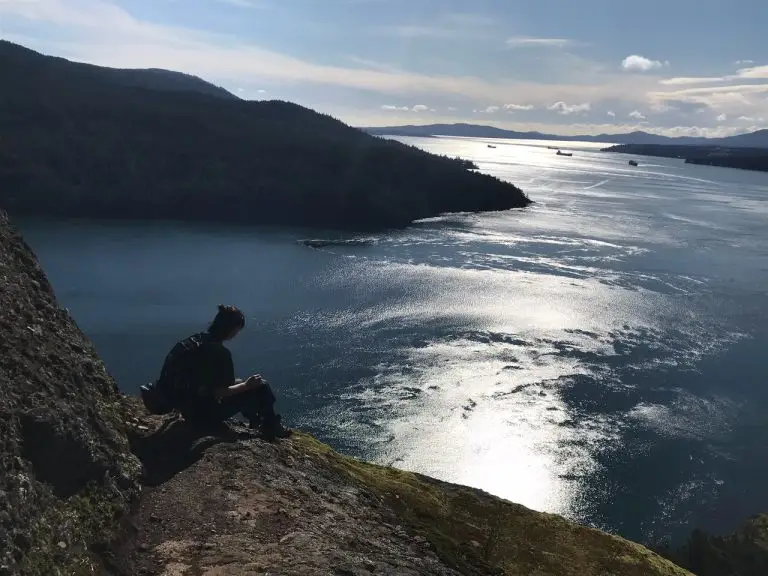
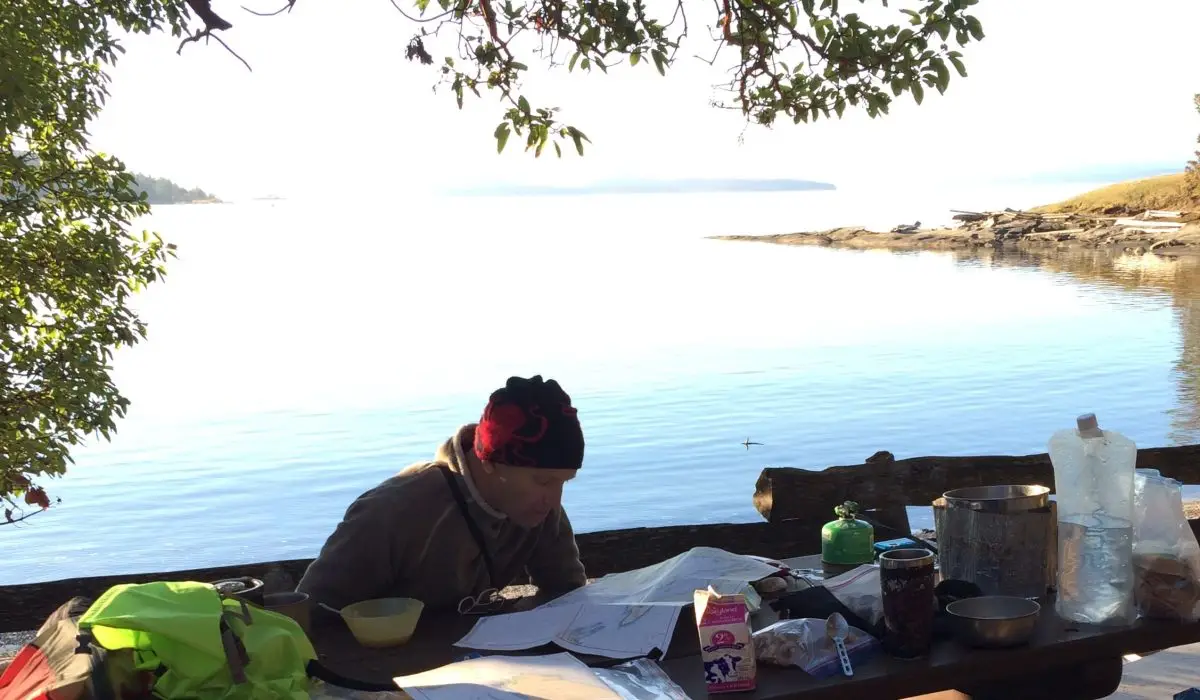
The North End
As you head North, you will encounter many more boats and fisherman as you pass by Ladysmith and Chemainus. Pirates Cove on De Courcy Island is a good place to stay and wait to time your crossing through Dodds Narrows to Nanaimo. To avoid this very busy and tricky pass, you may want to exit the trail at Cedar by the Sea boat ramp.
Leg 2(orange) of the Gulf Island Marine Trail joins Nanaimo and the Saanich Peninsula by following the west side of Salt Spring Island and through the Gulf Islands. This leg has many options for campsites. It is a popular area so travel midweek if possible in the busy summer months. The area is very popular with small boats and sailing vessels keep an eye out for traffic, including the many BC Ferries traveling between the islands.
South Section
This leg officially begins at the Island View Beach Regional Park. If you are walking on the ferry with your kayak, the best option is the beach next to the Government Dock at the end of Barnacle road.
The spit on Sidney Island is a remarkable place where you can enjoy a short walk across the dunes or a long paddle around. There are reservable campsites which is great for the busy summer months.
Portland Island may seem a bit too close to camp but it is an exceptional choice. There are 3 camp areas which have very different features. Trails circumnavigate the island so you can explore them all by foot.
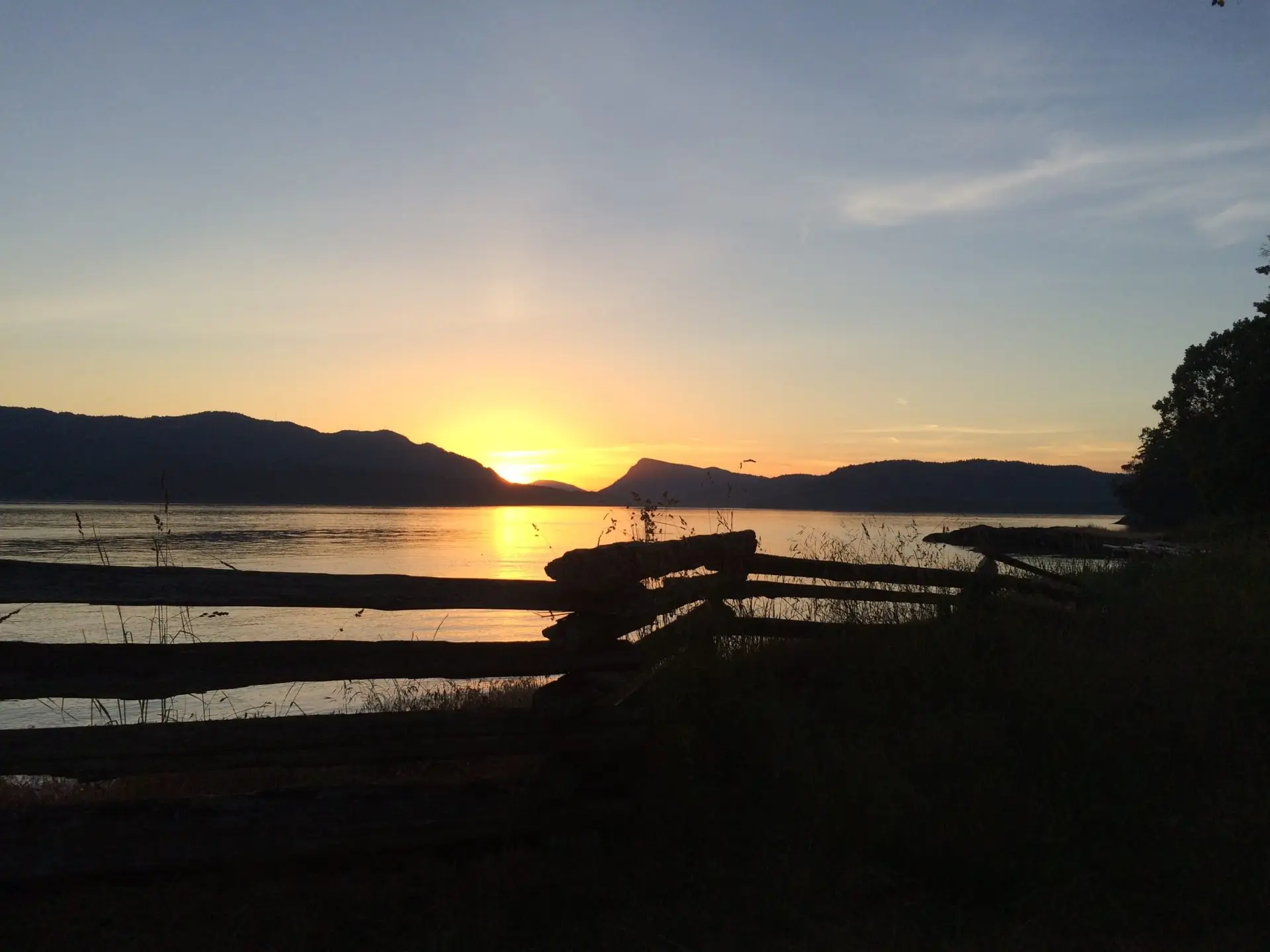
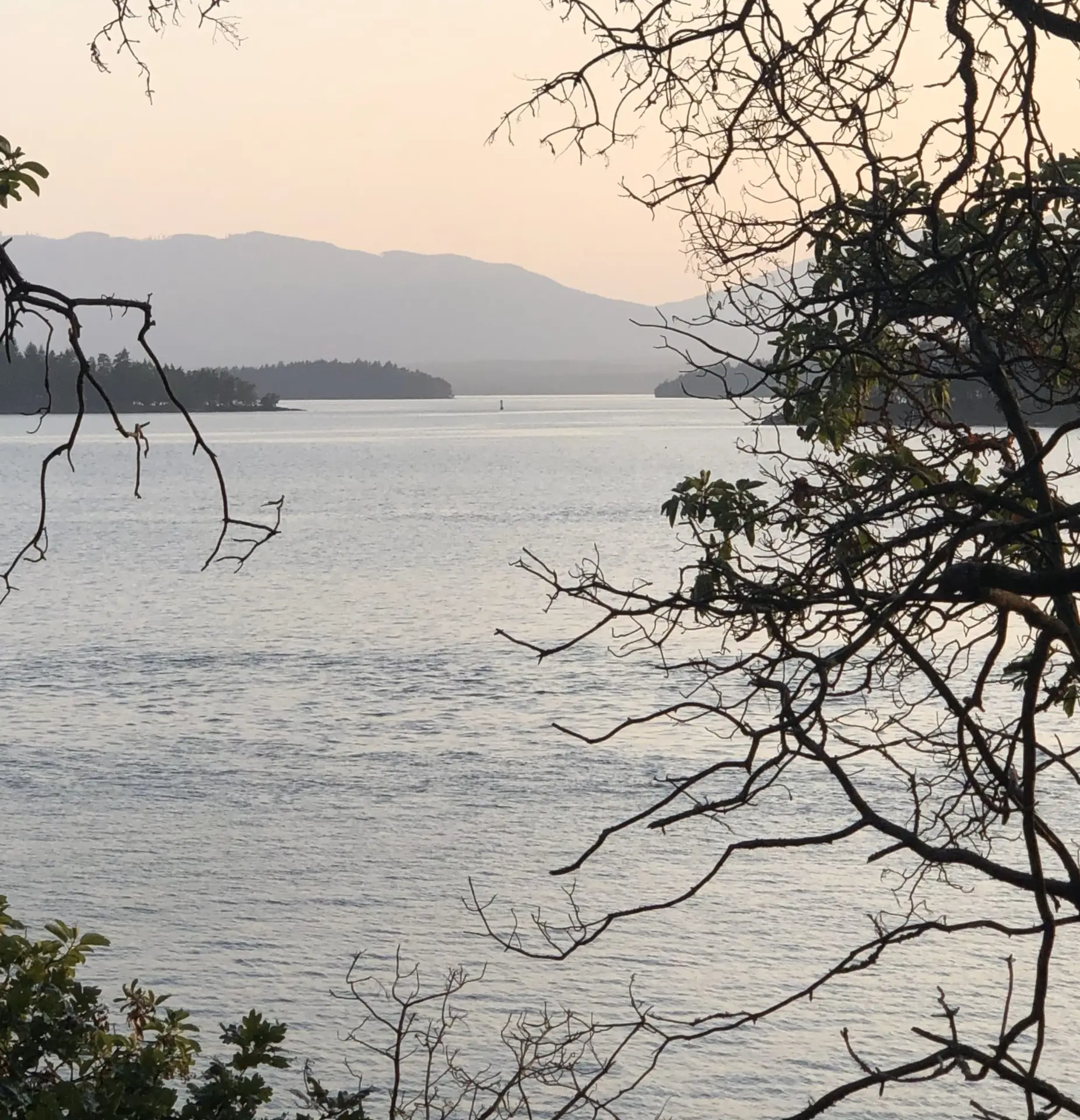
Middle Section
Keep a sharp eye out for the many ferries traveling through and between the islands. Prevost Island between Saltspring and Galiano is a great stopping point with beautiful views north and apples in the orchard if you are there late summer.
Wallace Island at the North End of Saltspring and Galiano has 3 great camp areas. They are very popular so arrive early and ensure your boats are well secured for the high tides. For a special treat, head over to the cafes at nearby Fernwood Point on Saltspring.
North Section
Traveling north, Blackberry Point makes a great lunch spot. It is the location of the first BC Marine Trails composting toilet. Unfortunately, the current land owner does not allow overnight camping. Don’t miss the sandstone cliffs on the northwest end of Valdes as you make your way north.
Pirates Cove on DeCourcy Island is the best spot to camp before the last leg to Nanaimo. The campground is best accessed from the south end, the north facing bay is filled with moored boats. The trail along the park allows you to check conditions before leaving.
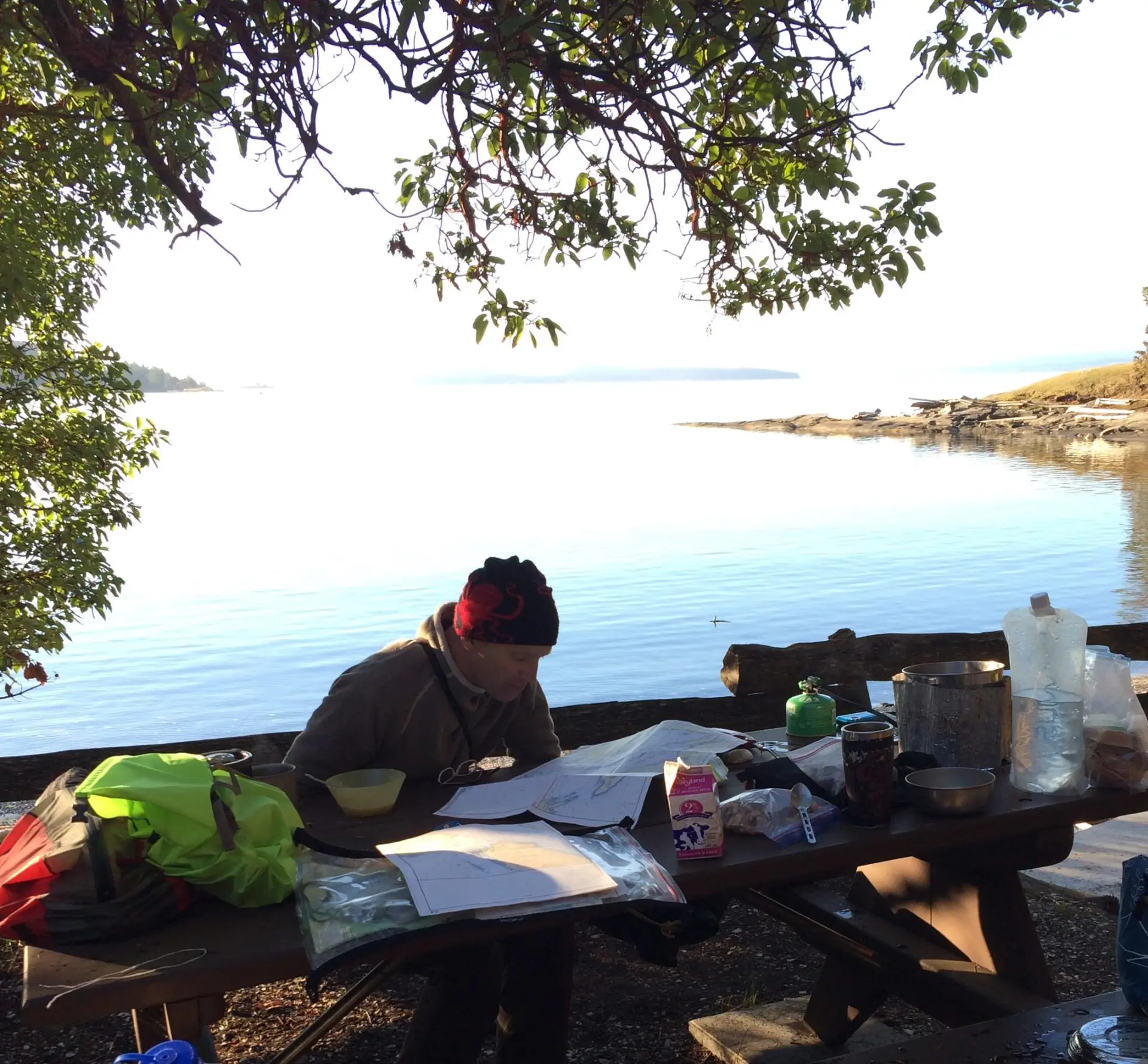
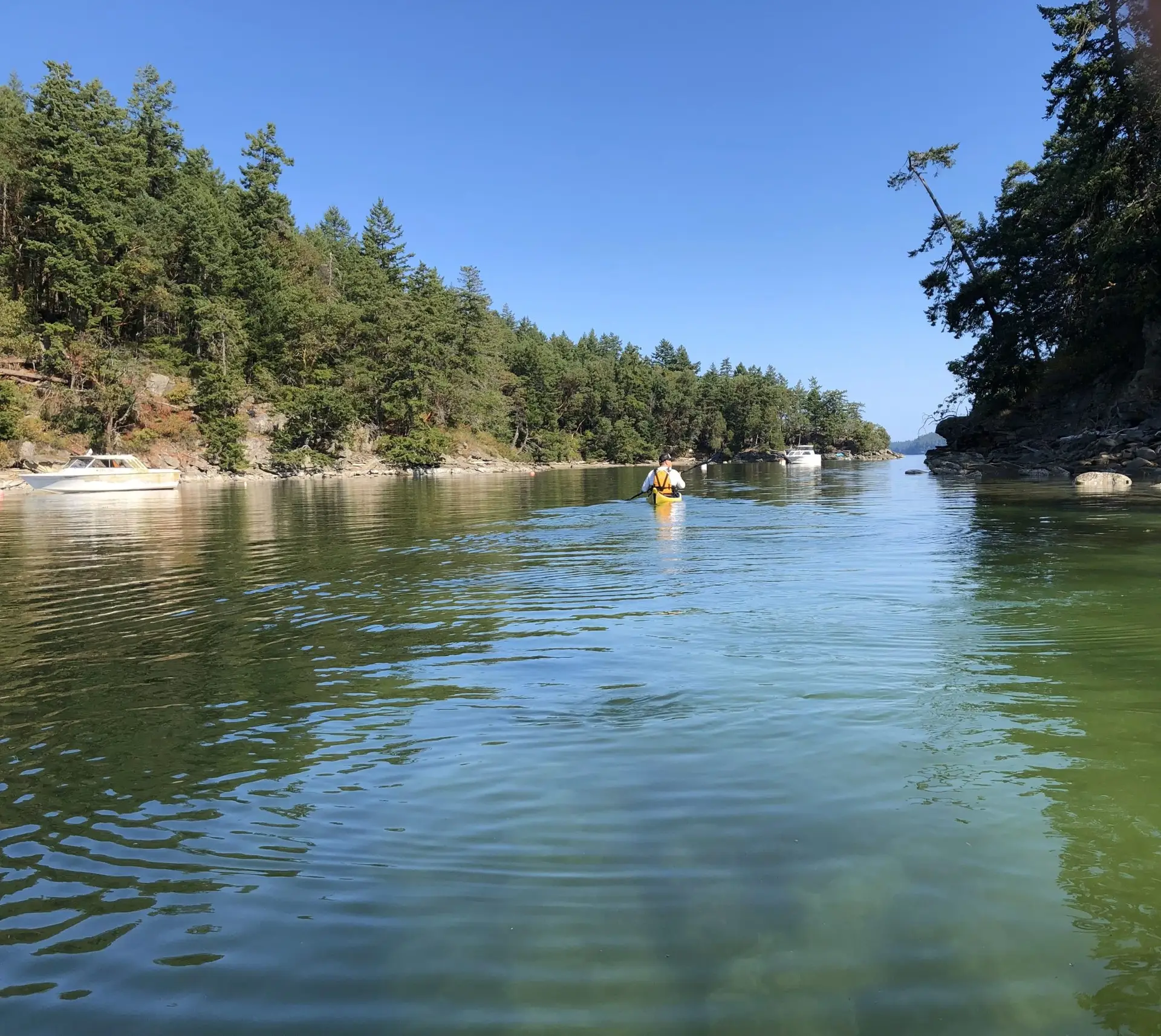
The Final Stretch
There are passes on either side of Mudge Island leading to Nanaimo. Take False Narrows on the east side because it is too shallow for many pleasure craft and the flow is half of Dodds Narrows. Active log booms run along Gabriola island and you may see a lumber man running from log to log. The cliffs just beyond are stunning.
Saysutshun (Newcastle) is a good last stop before heading into the Brechin Boat Ramp. One last night and you don’t need to cook with the Dinghy Dock Pub just across the channel at Protection Island. They have a low dock perfect for kayakers after fish and chips.
Leg 3 (yellow) of the Gulf Islands Marine Trail winds through the many small islands at the south boundary. While it sounds idyllic, there are many passes with fast moving water and rapidly shifting currents requiring knowledge of calculating slack water. Watch out for gale warnings in the Juan de Fuca, they blow into Boundary Pass and impact the weather more than the Strait of Georgia.
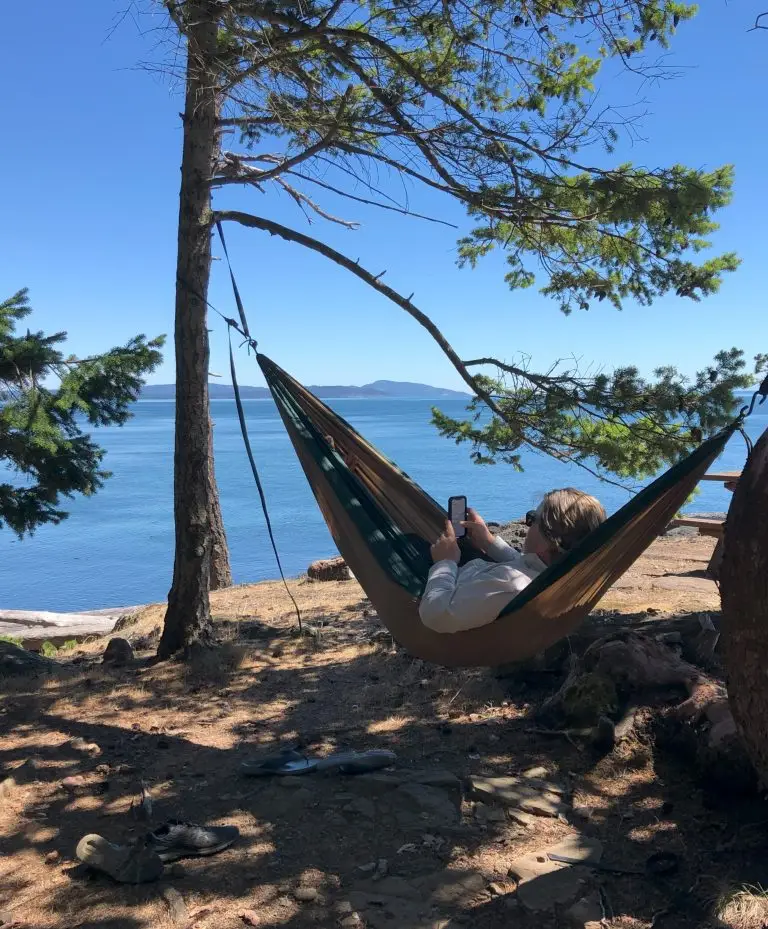
South Section
This leg officially begins at the Island View Beach Regional Park. If you are walking on the ferry with your kayak, the best option is the beach next to the Government Dock at the end of Barnacle road.
The spit on Sidney Island is a remarkable place where you can enjoy a short walk across the dunes or a long paddle around. There are reservable campsites which is great for the busy summer months.
D’Arcy Island has an exceptional pebble beach that heats up in the summer sun providing a hot rock massage after a cool dip in the sea.
Isle de Lis Marine Park on Rum Island has a bit of a trek to the campsite from the launch but the views of the San Juan Islands make it worthwhile. A trail around the island is a little overgrown at the south end making every hike an adventure.
South East Islands
Campsites are limited on Saturna and both Pender Islands with many residences along the shore lines. Narvaez Bay is a good stopping point if you need to wait for currents to round East Point. They are strong here as the Strait of Georgia and Juan de Fuca strait funnel through the San Juans and Gulf Islands. Keep watch for the resident Orcas that regularly pass by the point looking for salmon.
Cabbage Island is a small island off Saturna with good camping spots where you can watch the sunset over Saturna. Keep an eye out for the racoons and store food in the caches provided.
Boat Passage is a very small opening at low tide with lots of traffic so watch carefully as you pass by or through. The Belle Chain Islets are home to Stellar Sea Lions and other sea life, don’t get too close or you could get chased away.
Bennett Bay has some amazing sandstone ledges that are fun to explore if you have some extra time waiting for currents or winds to ease.
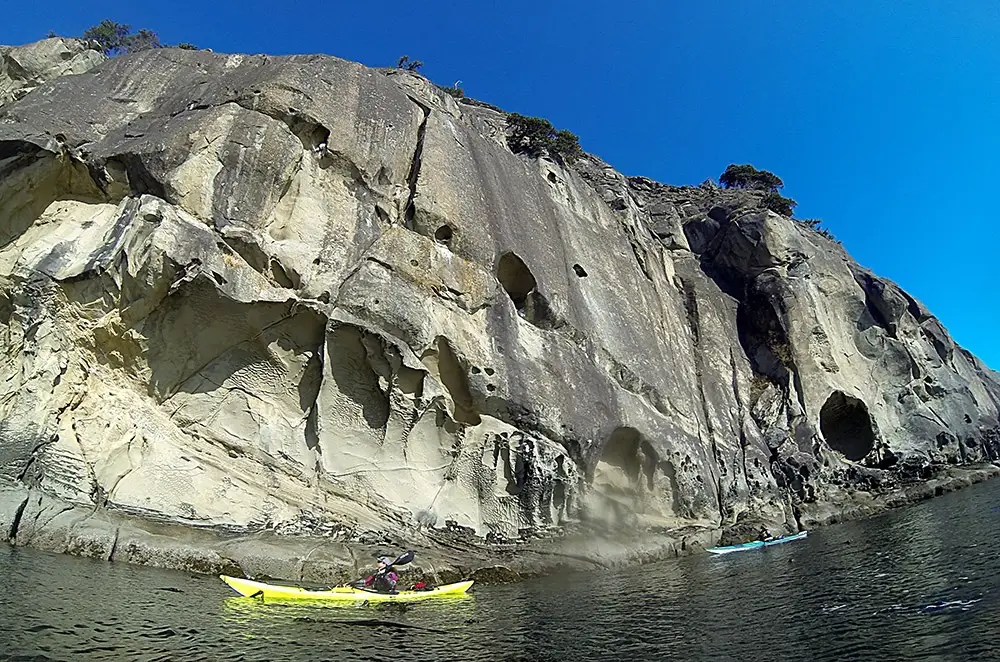
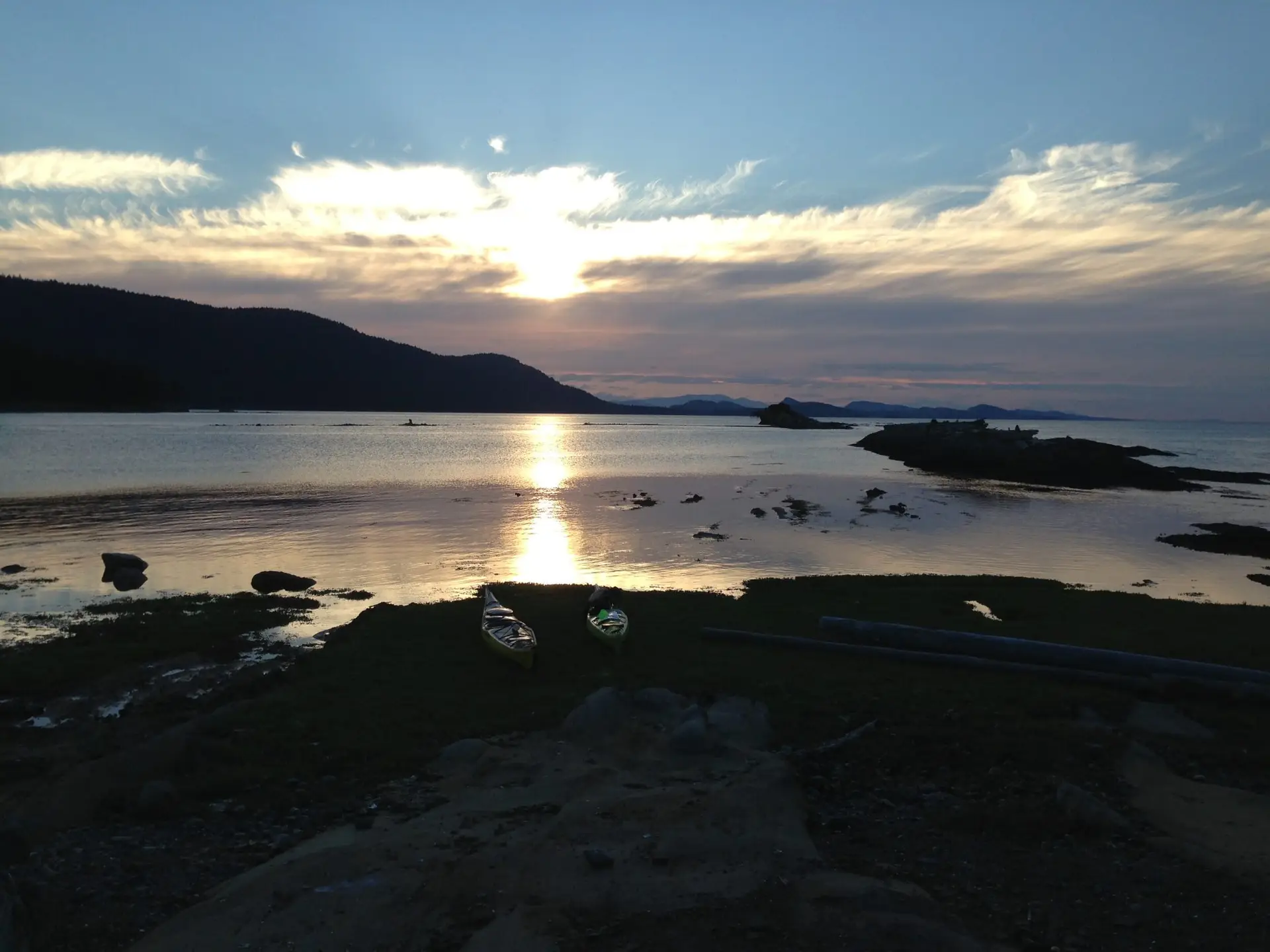
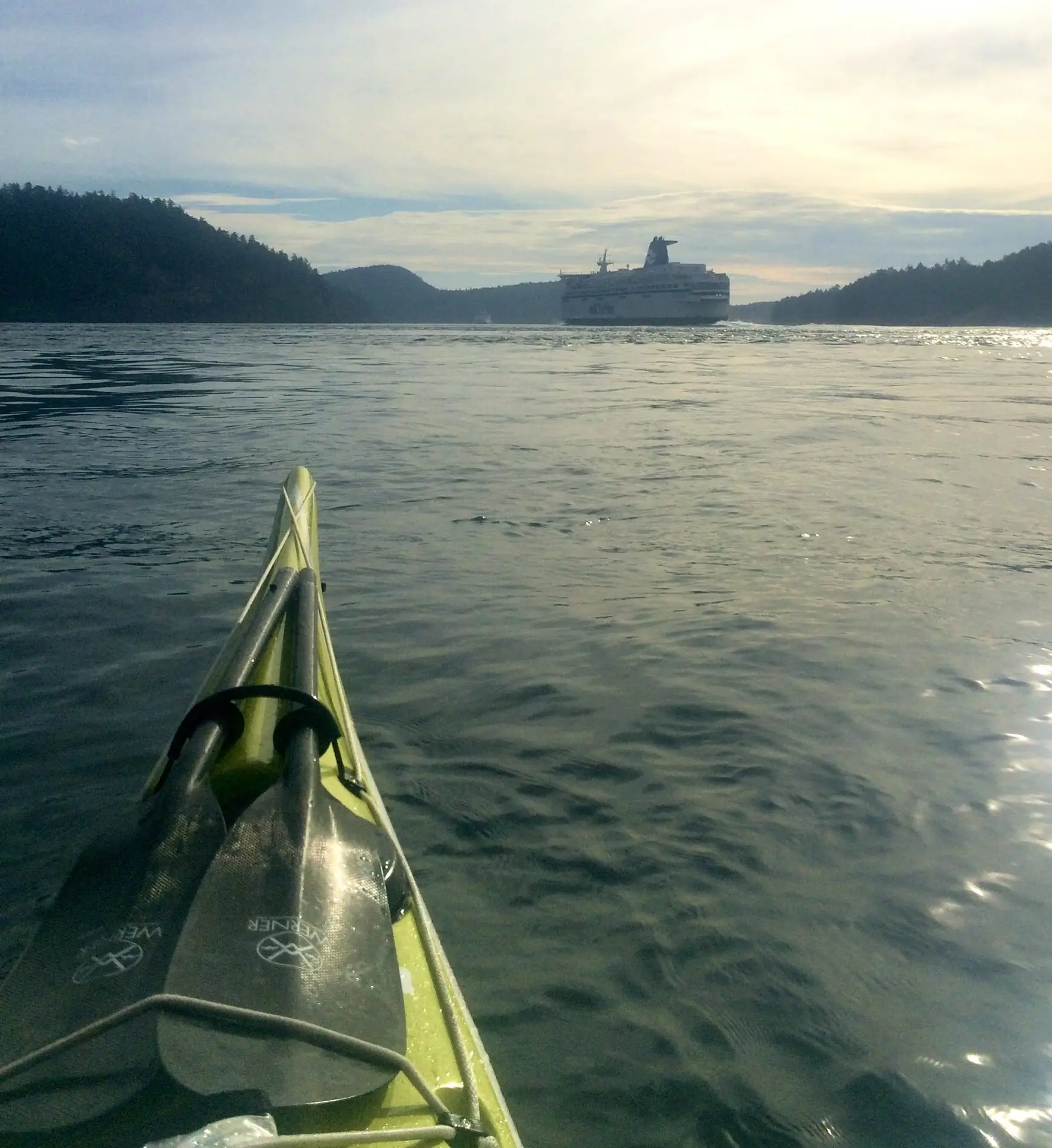
Active Pass
This is the main route for BC Ferries and there is not much room when they pass going in opposite directions every hour. Very strong currents in the twisting channel change rapidly and slack is very quick. This is not for the inexperienced paddler! Watch for spill over at the openings at either end.
Campsites are limited and require reservations so plan carefully.
The Mayne Island ferry at Village Bay has an easy beach landing next to the ferry dock making it a good option to avoid doing the full pass in one day.
As a BCMT member you can access our trip resources page or easily find resources online at Sea Kayak Association of BC.
Hazards & Risks
The British Columbia coastline is an inherently dangerous location, and marine trail users assume the risk of navigating the BC coast. The BC Marine Trails Network has pinpointed some key locations where risks are increased due to pre-existing known conditions or possibility of risk. However, marine trail users are cautioned that risk can occur at any time at any location, and proper equipment, clothing, rescue gear, preparation and training are recommended to ensure optimal safety. Recurring safety considerations include:
Currents and rips: Conditions will be lessened if not eliminated at slack times, so check the Tides and Currents Tables to find the safest time to cross or transit difficult locations.
Ferry lane crossings: Several busy ferry corridors must be crossed over the course of the Gulf Islands, Salish Sea, or Sea to Sky Marine Trails. Risk can be minimized by monitoring the appropriate Canadian Coast Guard Vessel Traffic Services broadcast channels and by calling in on that same channel to alert traffic to your presence. We strongly recommend calling in for groups crossing ferry lanes or in questionable conditions such as chop, darkness or fog that could make paddlecraft difficult to see.
Shipping lanes: Be sure to know where shipping lanes are located on your charts and monitor Canadian Coast Guard Vessel Traffic Services broadcast channels to track shipping movement.
